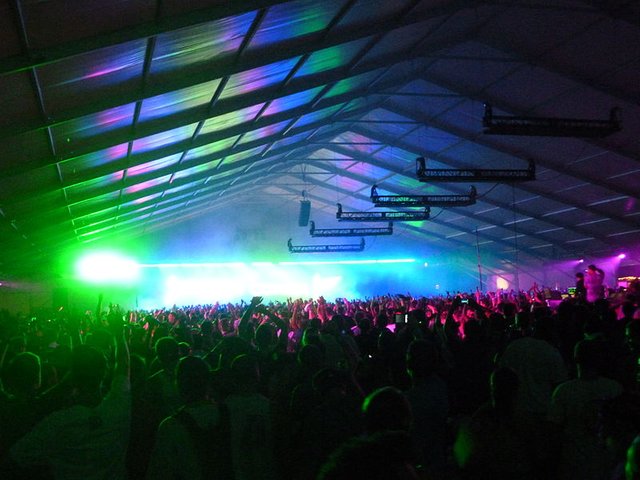
Electronic dance music (sometimes referred to as EDM, or in the UK simply as dance music) is electronic music produced primarily for the purposes of use within a nightclub setting, or in an environment that is centered in dance-based entertainment. The music is largely created for use by disc jockeys and is produced with the intention of it being heard in the context of a continuous DJ set; wherein the DJ progresses from one record to the next via a synchronized segue or “mix”
Electronic dance music is a set of percussive music genres that largely stem from the production methods of disco music, techno music, house music, and trance music. Such music was popularized via regional nightclub scenes in the 1980s, the warehouse party scene of the late 1980s, and the early rave scene of the acid house movement in the late 1980s.
In the latter half of the 1970s, the disco music scene began to shift away from its traditional orchestration (acoustic orchestras) on its recordings. For example, in 1977, producer Giorgio Moroder worked withDonna Summer to produce “I Feel Love”, a dance/discothèque hit made using synthesizers and drum machines. In 1979, the pair collaborated again on Donna Summer’s highest-selling album, Bad Girls, which incorporated similar production techniques. This sound became a feature of many disco records in the late 1970s and into the 1980s.
In the mid-1980s and into the early 1990s, disco’s popularity waned, but electronic production dominated new popular dance music styles, such as electro, Industrial, freestyle, house and techno. By the mid-1990s, the presence of electronic dance music in contemporary culture was noted widely, and its role in society began to be explored in published historical, cultural and social science academic studies.

The term electronic dance music was used in America as early as 1985, but didn’t catch on as a genre name until the second half of the 1990s, when it was embraced by the American music industry and in academic writing. The term’s use surged in the US in the late 2000s with the mainstream appeal of hybrid styles which were increasingly disconnected from EDM’s relatively underground roots, but remains largely unknown in the UK, where genres of electronic music for dancing are collectively referred to as “dance music”
Electronic dance music has existed in some form since at least the early 1970s. Sly and the Family Stone’s number-one pop hit “Family Affair” (1971), for example, employed a drum machine. As well, disco producers (such as Giorgio Moroder) and synth-pop acts (such as Kraftwerk) played crucial roles in EDM’s sonic development. However, the electronic dance music that would become a global culture was hatched in the American Midwest through the early 1980s. In Chicago Frankie Knuckles, resident DJ at the members-only African American gay club the Warehouse, would make his own edits, on reel-to-reel tape, of the cult disco he played, extending the grooves to keep the all-night dance floor filled. When Knuckles—along with other DJs in Chicago, such as Ron Hardy, Steve (“Silk”) Hurley, and Farley (“Jackmaster”) Funk—added a drum machine to his sets, it codified the basic formula of house music.
Similarly, Detroit techno has many early pioneers but one widely agreed-upon formative figure: Juan Atkins, who in 1981 partnered with Rik Davis as Cybotron and issued the single “Alleys of Your Mind.” Shortly after releasing an album, Enter (1983), the duo split up, at which point Atkins started his own label, Metroplex, and began releasing 12-inch vinyl singles under the name Model 500. In quick succession, Kevin Saunderson and Derrick May—who, with Atkins, made up the DJ collective Deep Space—also started labels (KMS and Transmat, respectively) and put out their own music. The sound that emerged from the Detroit scene was largely abstract instrumental funk, though Saunderson often used vocalists and had his biggest hits with the soul-influenced duo Inner City. It became formalized as a style after Atkins, in 1988, named a track “Techno Music,” which was included on (and inspired the title of) that year’s defining anthology, Techno! The New Dance Sound of Detroit.
Collect from: https://www.britannica.com/art/electronic-dance-music
Good information.
Downvoting a post can decrease pending rewards and make it less visible. Common reasons:
Submit
Thanks
Downvoting a post can decrease pending rewards and make it less visible. Common reasons:
Submit
Hi! I am a robot. I just upvoted you! I found similar content that readers might be interested in:
https://www.britannica.com/art/electronic-dance-music
Downvoting a post can decrease pending rewards and make it less visible. Common reasons:
Submit